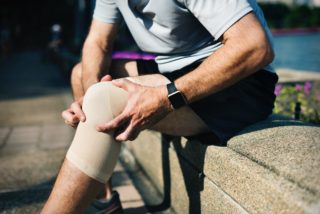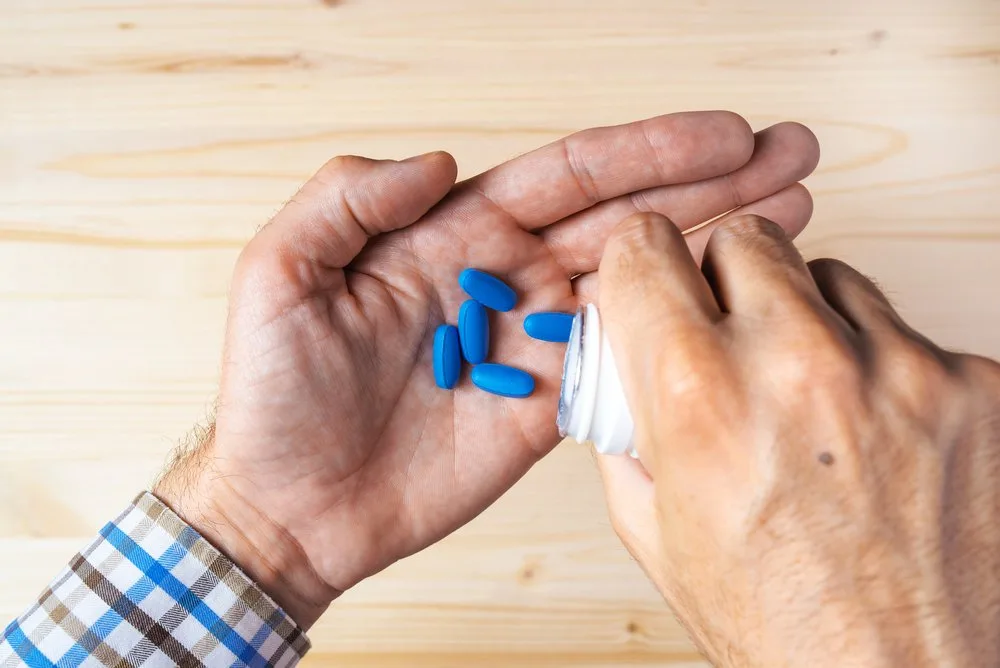A new study shows that opioid use among U.S. patients with knee osteoarthritis costs society around 14 billion dollars in a lifetime. Guidelines do not recommend the use of opioids to manage pain for individuals with knee osteoarthritis. However, the study published in Arthritis Care & Research, estimates that 858,000 Americans use opioids such as tramadol and oxycodone for their knee pain. This equates to nearly $0.5 billion annually.
Opioid Use Costs Society
The study was published in the official journal of the American College of Rheumatology and the Association of Rheumatology Professionals. A team led by Elena Losina, Ph.D., Robert W. Lovett Professor of Orthopedic Surgery, of Brigham and Women’s Hospital, used a computer simulation to estimate the annual and lifetime contribution of opioids to knee osteoarthritis–related costs. The researchers show the direct medical cost of knee osteoarthritis treatment including opioids totals $7.45 billion or 53 percent of the total lifetime costs.
The remaining 47 percent of lifetime costs to society is used to pay for lost productivity at work, criminal justice expenses due to opioid use disorders among patients with knee osteoarthritis, and cost associated with diversion activities related to illicit use by others.
Economic burden
For an individual patient who used opioids to treat their knee osteoarthritis, the lifetime opioid-related cost was estimated at $13,770. “Given the larger number of patients with knee osteoarthritis using opioids, our results provide additional evidence of the substantial economic burden of opioid use on knee osteoarthritis pain management and the potential savings from preventing opioid use,” said Dr. Losina.
What is knee osteoarthritis?
What Causes Knee Osteoarthritis?
The most common cause of osteoarthritis in the knee is age. Almost everyone will eventually develop some degree of osteoarthritis. However, WebMD explains, several factors increase the risk of developing significant arthritis at an earlier age.
- Age. The ability of cartilage to heal decreases as a person gets older.
- Weight. Weight increases pressure on all joints, especially the knees. Every pound of weight you gain adds 3 to 4 pounds of extra weight on your knees.
- Heredity. This includes genetic mutations that might make a person more likely to develop osteoarthritis in the knee. It may also be due to inherited abnormalities in the shape of the bones that surround the knee joint.
- Gender. Women aged 55 and older are more likely than men to develop osteoarthritis in the knee.
- Repetitive stress injuries. These are usually a result of the type of job a person has. People with certain occupations that include a lot of activity that can stress the joints, such as kneeling, squatting, or lifting heavy weights (55 pounds or more), are more likely to develop osteoarthritis of the knee because of the constant pressure on the joint.
- Athletics. Athletes involved in soccer, tennis, or long-distance running may be at higher risk for developing osteoarthritis of the knee. That means athletes should take precautions to avoid injury. However, it’s important to note that regular moderate exercise strengthens joints and can decrease the risk of osteoarthritis. In fact, weak muscles around the knee can lead to osteoarthritis.
- Other illnesses. People with rheumatoid arthritis, the second most common type of arthritis, are also more likely to develop osteoarthritis. People with certain metabolic disorders, such as iron overload or excess growth hormones, also run a higher risk of osteoarthritis.
 Knee osteoarthritis can be crippling
Knee osteoarthritis can be crippling
The results reveal a substantial economic burden of opioid use among patients with knee osteoarthritis. The study also indicated that substantial savings can result from following current guidelines recommending against such use.
Other ways to manage pain
According to WebMD, medical specialists recommend that patients with knee osteoarthritis can manage their pain in other ways:
- Weight loss. …
- Exercise. …
- Alternative therapies. …
- Using devices such as braces. …
- Physical and occupational therapy. …
- Surgery.
In summary
Dr. Elina Losina concluded: “The most important part of our study is that we estimated that almost half of the total societal cost of opioid use in persons with symptomatic knee osteoarthritis is used to pay for lost work productivity and criminal justice and other consequences of the diversion of prescribed opiates to unlawful use.”
“These data offer new evidence of the magnitude of the societal burden generated by opioid use and misuse and could be used to educate health care providers and health policy decision-makers on the best alternatives to opiate use.”
Scientific references
Full Citation: “Societal cost of opioid use in symptomatic knee osteoarthritis patients in the United States.” Jamie L. Huizinga, Elizabeth E. Stanley, James K. Sullivan, Shuang Song, David J. Hunter, A. David Paltiel, Tuhina Neogi, Robert R. Edwards, Jeffrey N. Katz, and Elena Losina. Arthritis Care & Research; Published Online: February 25, 2021 (DOI: 10.1002/acr.24581).
http://doi.wiley.com/10.1002/
Read More
Can CBD help alleviate pain naturally? Read what experts have to say about CBD and pain relief.



![women [longevity live]](https://longevitylive.com/wp-content/uploads/2020/01/photo-of-women-walking-down-the-street-1116984-100x100.jpg)










